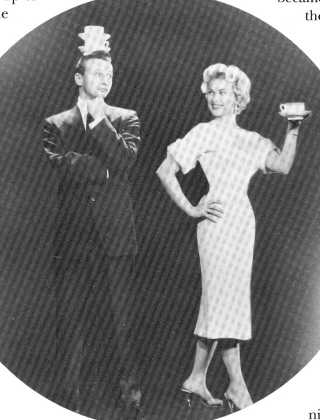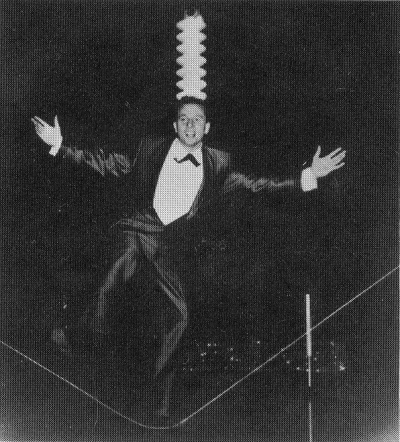|
As
a youngster, he didn't understand the cataclysmic nature of
the conflict, and he and friends took a childish pride in
being able to identify air mines, fire bombs and explosion
bombs from the fragments they found all around them.
When the bombing
became
regular, Dieter's family sent him to the southern part of
Germany to live on farms
and in military camps. Both parents died before the war ended
and Dieter went to live with an uncle, a well-known comedy
juggler named "Little Knox."
As he was watching over the cows on the family farm
Dieter started amusing himself for the first time with
juggling. He asked Little Knox to teach him the art but his
uncle refused at first, claiming that Dieter didn't have the
talent Dieter admits this was the case, but Little Knox didn't
count on this young disciple's tenacity. Dieter said,
"I couldn't balance and I couldn't juggle, but I
liked it so much I'd get up in the middle of the night and
practice so my uncle wouldn't think I wasn't talented."
In
1947 Little Knox relented and began 13-yearold Dieter's
formal training. Little Knox began his career as an acrobat in
1911, but made his reputation as a well respected comedy
juggler who performed three balls and kickups with clubs. He
had many juggling friends, and another frequent visitor to the
practice studio was King Repp, a giant figure in the German
entertainment world.
King
Repp was also a comedy juggler, and was the first performer to
use three different colored top hats. He used a red one,
yellow one and green one to emulate traffic lights, and the
effect of them flying around his head as he swept them on and
off was said to be stunning.
Dieter
explained, "King Repp had done an act with my father and
two other people when they .were young. I knew him very well,
he came to practice to see if I was making any progress, and
he gave me my first cigar boxes and top hat. I was very proud
of him, he was always my idol in life."
As
Little Knox wound down his own performing career, he cranked
up that of his nephew. They
performed together for a while as the Two Krakows. As Tasso
would learn a new trick, he would add it to the act and Knox
would take out one of his own to keep the time constant. When
he learned the cup and
saucer trick, Knox saw it as the opportunity to give young
Dieter a stage name. "He said I should name myself 'Tasso'
because the word for 'cup' sounds like that in just about
every European language," Tasso explained.
|



